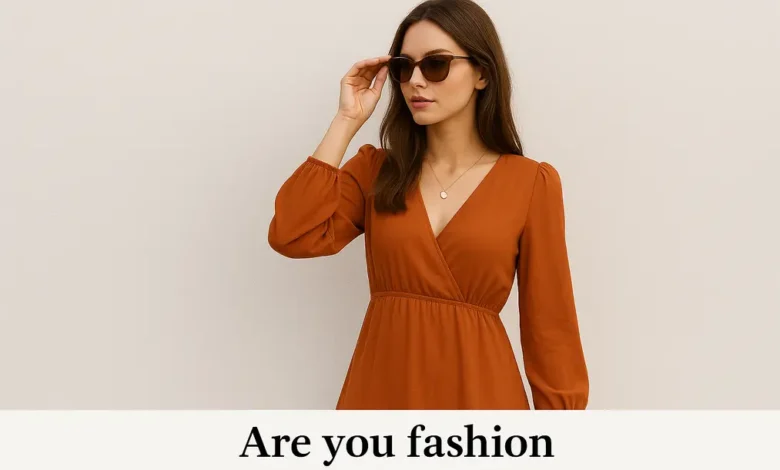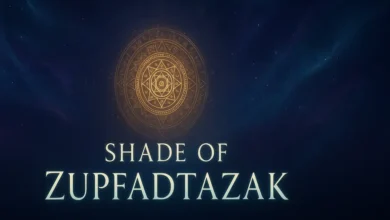AreYouFashion: Exploring Style, Trends, and the Digital Fashion Space

Introduction to AreYouFashion
When people hear the word fashion, they usually think about luxury runways, iconic designers, or the latest Instagram trends. But the keyword AreYouFashion is more than just a phrase—it’s an evolving idea that speaks to how we identify with fashion in the digital era. The phrase challenges us to ask ourselves: Are you fashion-forward? Are you defining your style, or are you following someone else’s? This concept blends individuality with the global movement of online fashion culture.
In recent years, the fashion industry has shifted massively from glossy magazines to online communities and niche platforms. People no longer just consume fashion—they interact with it, review it, and even shape its future. That’s where AreYouFashion fits perfectly: it represents the rise of online discussions, reviews, and fashion-focused blogs that influence trends as much as traditional fashion houses do.
At its core, AreYouFashion captures the intersection of personal style and digital influence. Whether it’s through blogs, online platforms, or social media hashtags, the term has become a way for people to engage with fashion on a global scale. It’s less about wearing the trendiest outfits and more about asking yourself if your style reflects who you are.
The Rise of Digital Fashion Communities
Fashion used to be exclusive, reserved for those who could afford high-end clothing or attend elite shows. But the internet disrupted that narrative. Today, communities built around fashion—like those represented under the keyword AreYouFashion—have opened the doors for everyone to participate. No matter where you live, you can be part of the global style conversation.
These communities thrive on shared interests, reviews, and advice. People write about their favorite brands, critique products, or share their experiences shopping online. A blog or forum with the theme AreYouFashion often becomes a safe space for both newcomers and fashion enthusiasts to talk freely without feeling judged. In fact, many of these spaces go beyond clothing—they touch on beauty, lifestyle, and even sustainability.
What makes online fashion communities powerful is their diversity. Unlike fashion magazines that push a single narrative, digital platforms showcase voices from all over the world. Whether someone is into streetwear, luxury couture, or thrifted outfits, AreYouFashion reflects the inclusivity and variety that modern style truly embodies.
AreYouFashion and Online Reviews
One of the most practical aspects of AreYouFashion is its connection to reviews. Before purchasing clothes online, most people look for honest feedback from real buyers. In fact, surveys show that the majority of online shoppers rely on reviews before making a purchase. Platforms or blogs connected to the AreYouFashion idea often provide detailed reviews of fashion products, brands, and even customer experiences.
The importance of these reviews can’t be overstated. Fashion is personal, and buying online comes with risks like sizing issues, color differences, or quality concerns. By reading reviews under the AreYouFashion umbrella, customers feel more confident about where they’re spending their money. It bridges the gap between consumers and fashion companies by holding brands accountable.
In addition, reviews also spark discussions. People don’t just read them—they reply, add their own experiences, and sometimes create viral conversations that influence thousands of other shoppers. That’s why AreYouFashion as a concept is so relevant today: it’s not just about style, but also about trust and shared knowledge in the digital shopping age.
The Influence of Social Media on AreYouFashion
Social media is arguably the most significant driver of fashion trends today. Platforms like Instagram, TikTok, and Pinterest have turned everyday people into influencers, and hashtags like #AreYouFashion could easily capture global attention. This is where fashion has become democratized: instead of just celebrities, anyone can share their look, build a following, and inspire others.
Social media also makes trends move faster than ever. A look that goes viral today may be outdated next week, but it shows how quickly the concept of AreYouFashion adapts. For example, TikTok creators have sparked micro-trends like “coastal grandmother chic” or “clean girl aesthetic,” proving that fashion can be playful, experimental, and community-driven.
Another aspect is brand engagement. Many fashion companies now directly interact with audiences on social media, using campaigns that ask questions like “What’s your style?” or “Are you fashion enough?” This mirrors the philosophy behind AreYouFashion: fashion is no longer one-sided—it’s a conversation where both creators and consumers participate equally.
Personal Style vs. Trends: What Does AreYouFashion Really Mean?
One of the most interesting discussions around AreYouFashion is the tension between personal style and mainstream trends. Fashion trends will always exist, but true style is about authenticity. The question “Are You Fashion?” can be interpreted as: Are you following trends blindly, or are you shaping your own path through fashion?
Personal style often lasts longer than fleeting trends. It’s built on comfort, personality, and cultural influences. For example, someone who loves minimalist outfits may never adopt the bold, colorful trend of the season, but that doesn’t make them any less fashionable. Instead, it highlights how broad the definition of fashion can be.
The beauty of the AreYouFashion concept is that it allows space for both. You can enjoy experimenting with new trends while still holding on to your signature style. The key takeaway is that fashion is not a uniform—it’s self-expression. And whether you fit into what’s currently “in” or not, you still belong to the larger fashion conversation.
The Role of Sustainability in the AreYouFashion Movement
Sustainability has become one of the hottest topics in fashion today, and AreYouFashion can’t be discussed without addressing it. Fast fashion has raised concerns about waste, unethical labor practices, and environmental damage. Modern fashion enthusiasts are increasingly asking whether being fashionable also means being responsible.
Within AreYouFashion-inspired spaces, sustainability often takes center stage. People exchange tips about buying second-hand, supporting eco-friendly brands, and recycling clothes. There’s also a growing awareness about “quality over quantity,” encouraging shoppers to invest in timeless pieces rather than buying cheaply made items that won’t last.
The shift toward sustainable fashion reflects a deeper understanding of what it means to truly be stylish. It’s not only about looking good but also about making conscious choices. So when we ask “Are You Fashion?” the modern answer could be: yes, but in a way that respects both individuality and the planet.
Conclusion: Why AreYouFashion Matters Today
The keyword AreYouFashion isn’t just a catchy phrase—it represents an evolving culture where fashion meets individuality, community, and responsibility. It reminds us that style is not dictated from the top down anymore. Instead, it’s a two-way street where everyone can contribute, whether through reviews, social media, or simply embracing their personal style.
In today’s world, being “fashion” isn’t just about wearing what’s trendy. It’s about how you engage with fashion—whether that’s through sustainability, digital communities, or your own creativity. AreYouFashion is ultimately a question of identity. It asks us not just if we follow trends, but if our style is authentic to who we are.
So the next time you think about fashion, ask yourself: Am I fashion? Or better yet, am I my own kind of fashion? That’s what truly makes the concept of AreYouFashion timeless and relevant in our ever-changing digital world.



